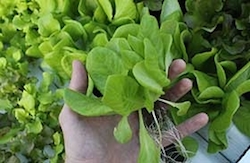 Dr. Joan Archer is an attorney for Husch Blackwell and a member of their Food and Agribusiness Business Unit. Her entire practice is focused on precision agriculture and animal health. So it was no surprise her expertise was utilized during the 2015 InfoAg Conference in St. Louis. Joan, alongside her colleagues, spoke on a few emerging legal issues that have an impact on precision ag technology.
Dr. Joan Archer is an attorney for Husch Blackwell and a member of their Food and Agribusiness Business Unit. Her entire practice is focused on precision agriculture and animal health. So it was no surprise her expertise was utilized during the 2015 InfoAg Conference in St. Louis. Joan, alongside her colleagues, spoke on a few emerging legal issues that have an impact on precision ag technology.
“One of the big points of conversation is who owns the data and how do we protect the privacy of that data? There is a lot of discord among folks in the industry because different positions are being taken.”
Joan said she hears many people saying that this problem will simply be decided in the courts. But she would rather her clients act proactively now by taking steps to avoid disputes in the future. Her best advice to clients involves a good contract.
“You need good contract language that spells out consistently through the agriculture chain. From the land owner, to the lessor, to the precision ag company, to the spray company, to the food production company. They all have to be on the same page.”
Consulting with an attorney is your best bet no matter where you fall on the ag supply chain. Hear more tips from Joan on precision ag data issues in my complete interview with her here: [wpaudio url=”http://traffic.libsyn.com/zimmcomm/infoag-15-archer.mp3″ text=”Interview with Dr. Joan Archer, Husch Blackwell”]
View and download photos from the event here: 2015 InfoAg Conference Photo Album













